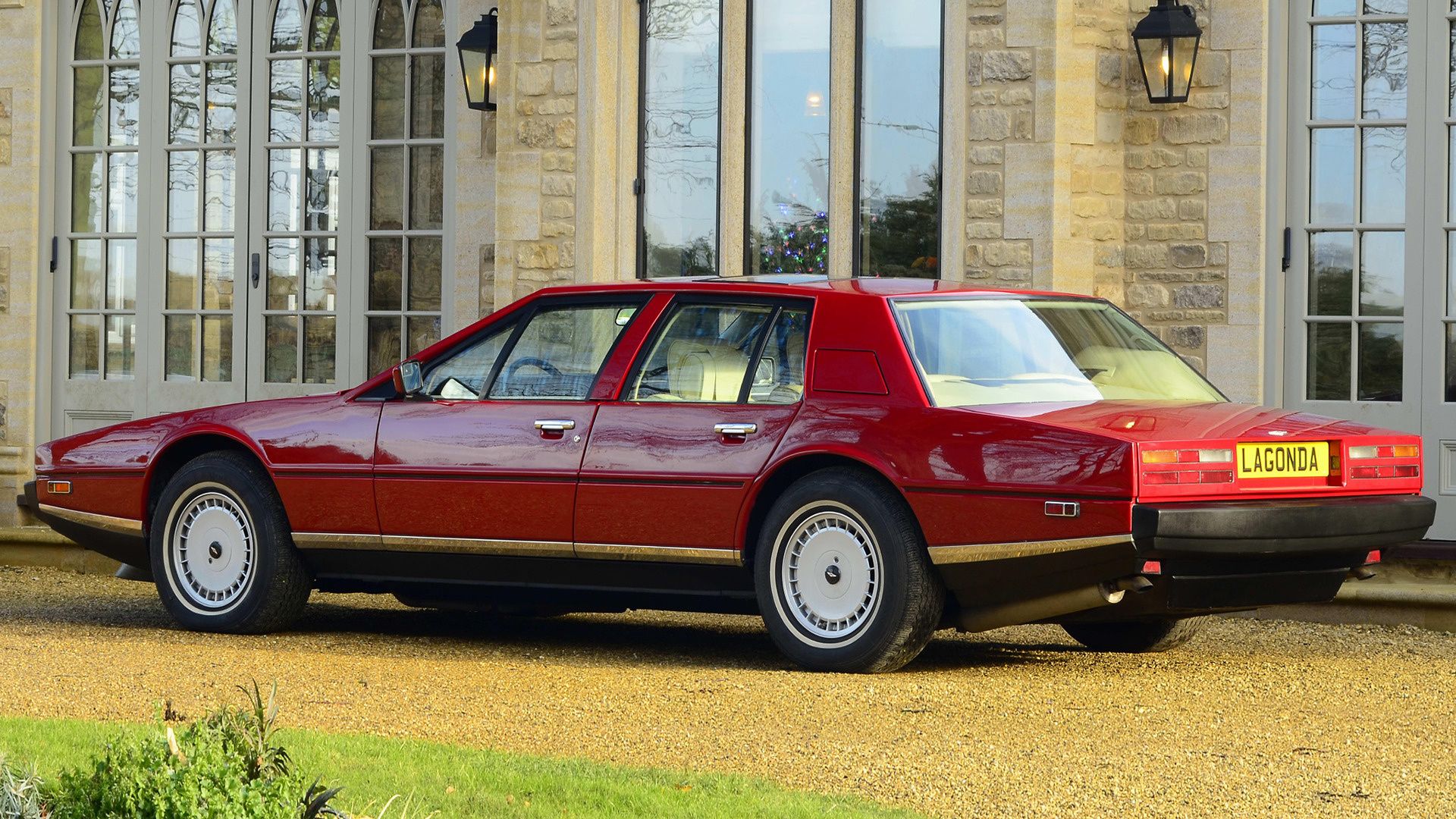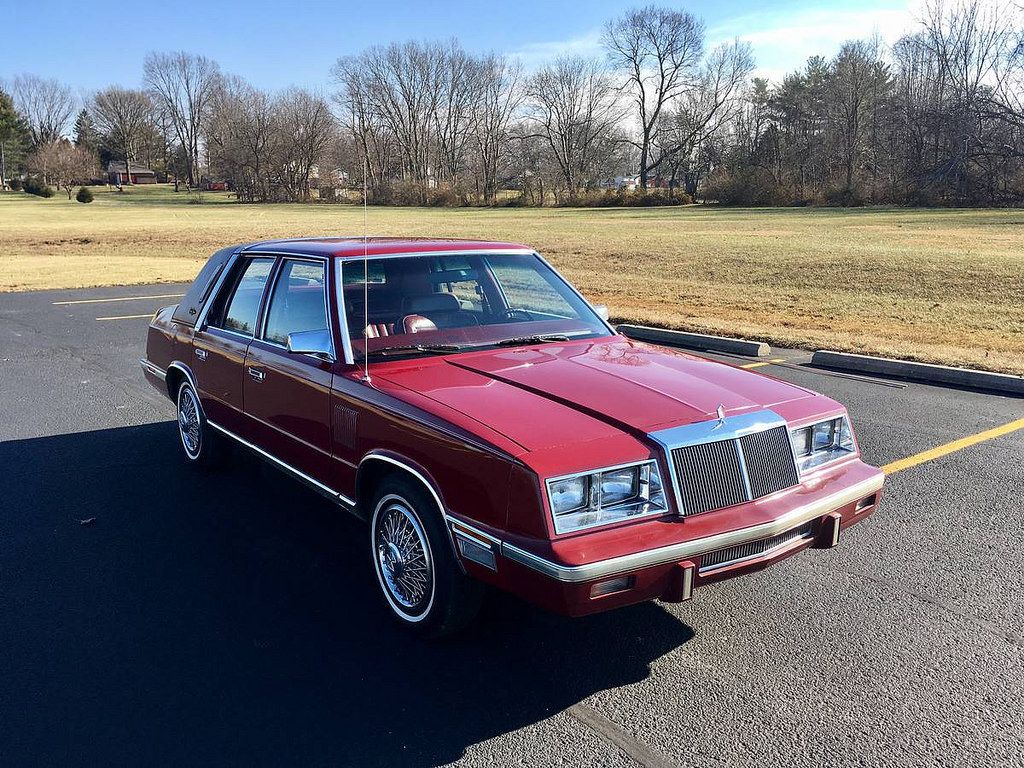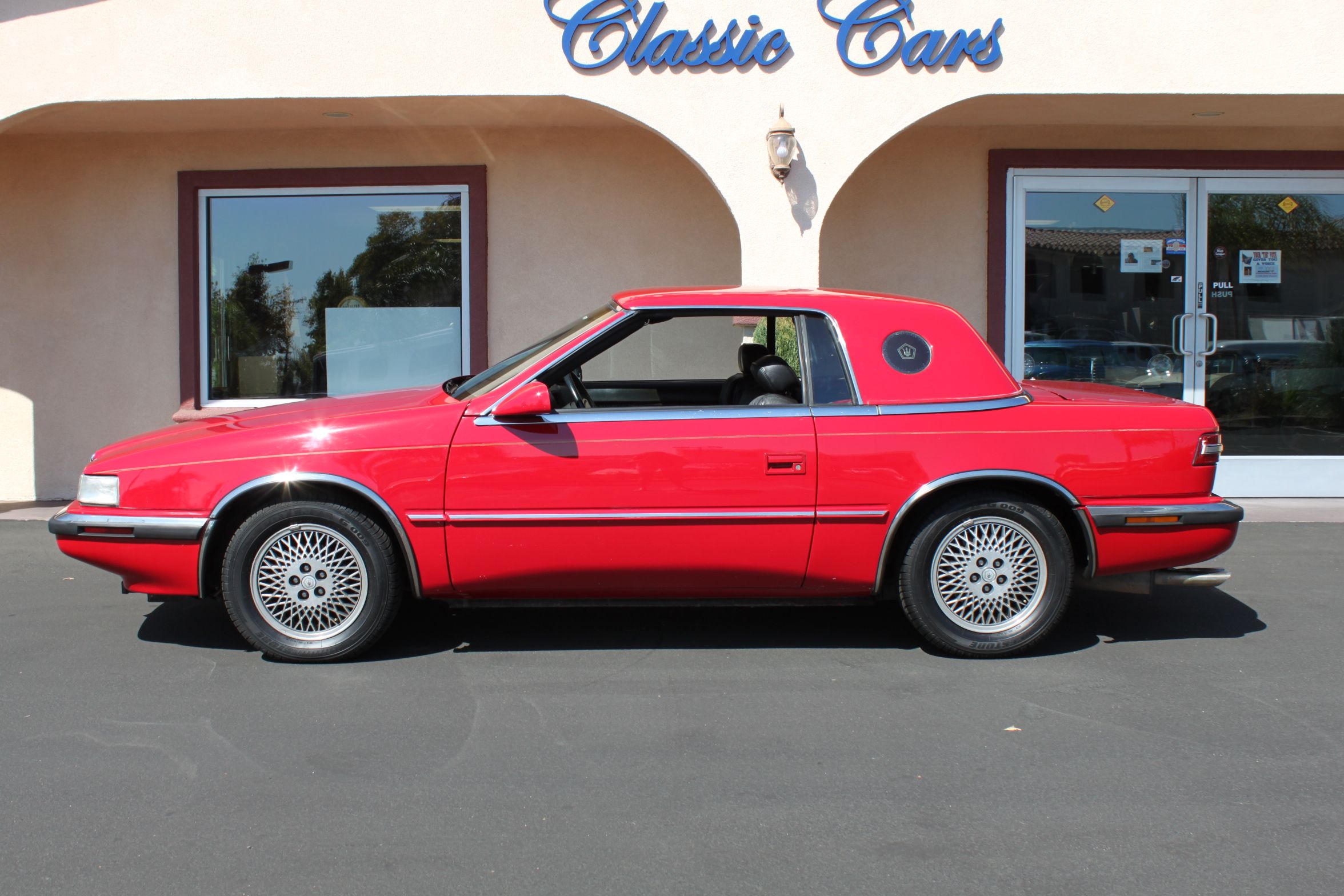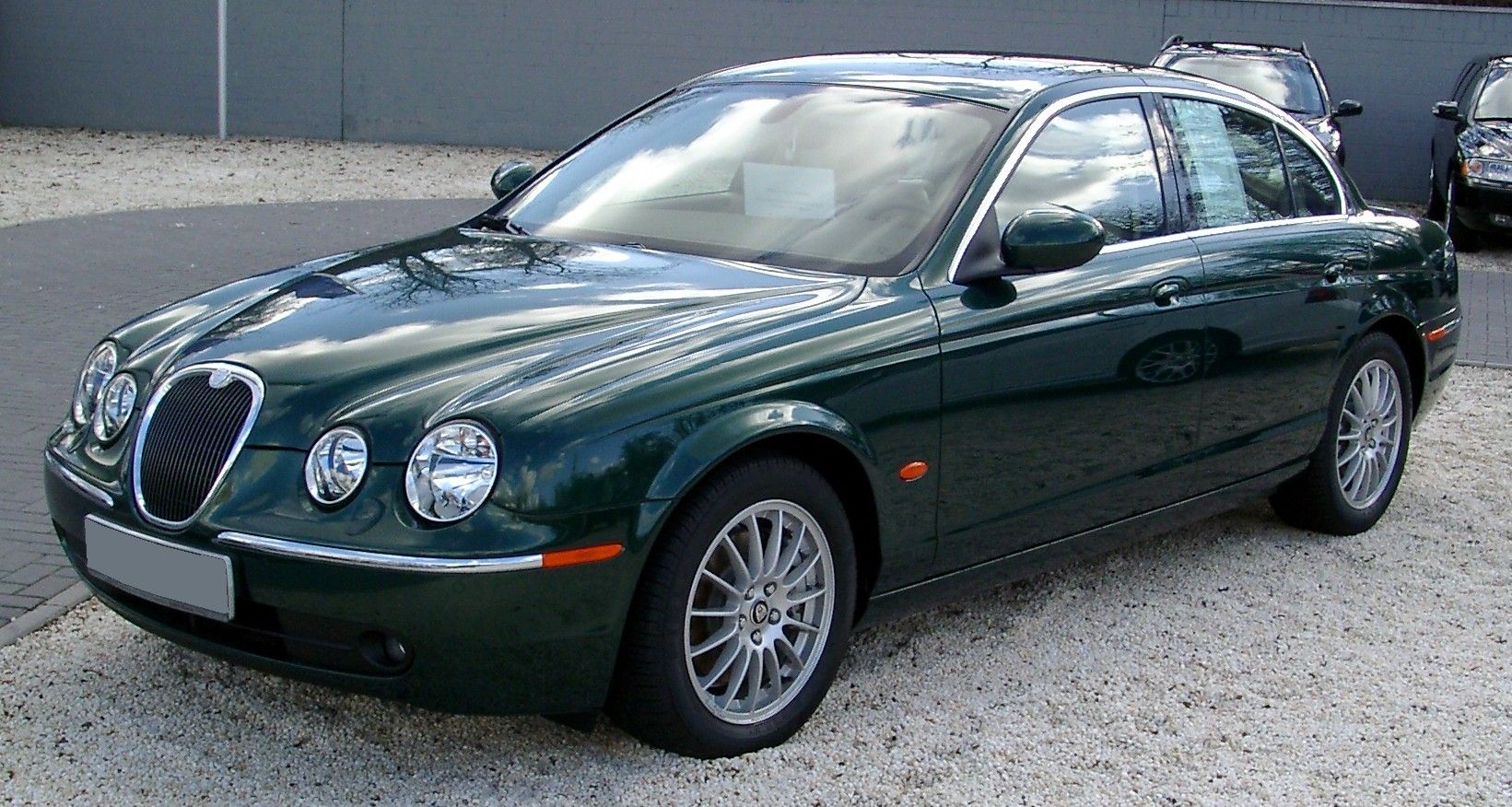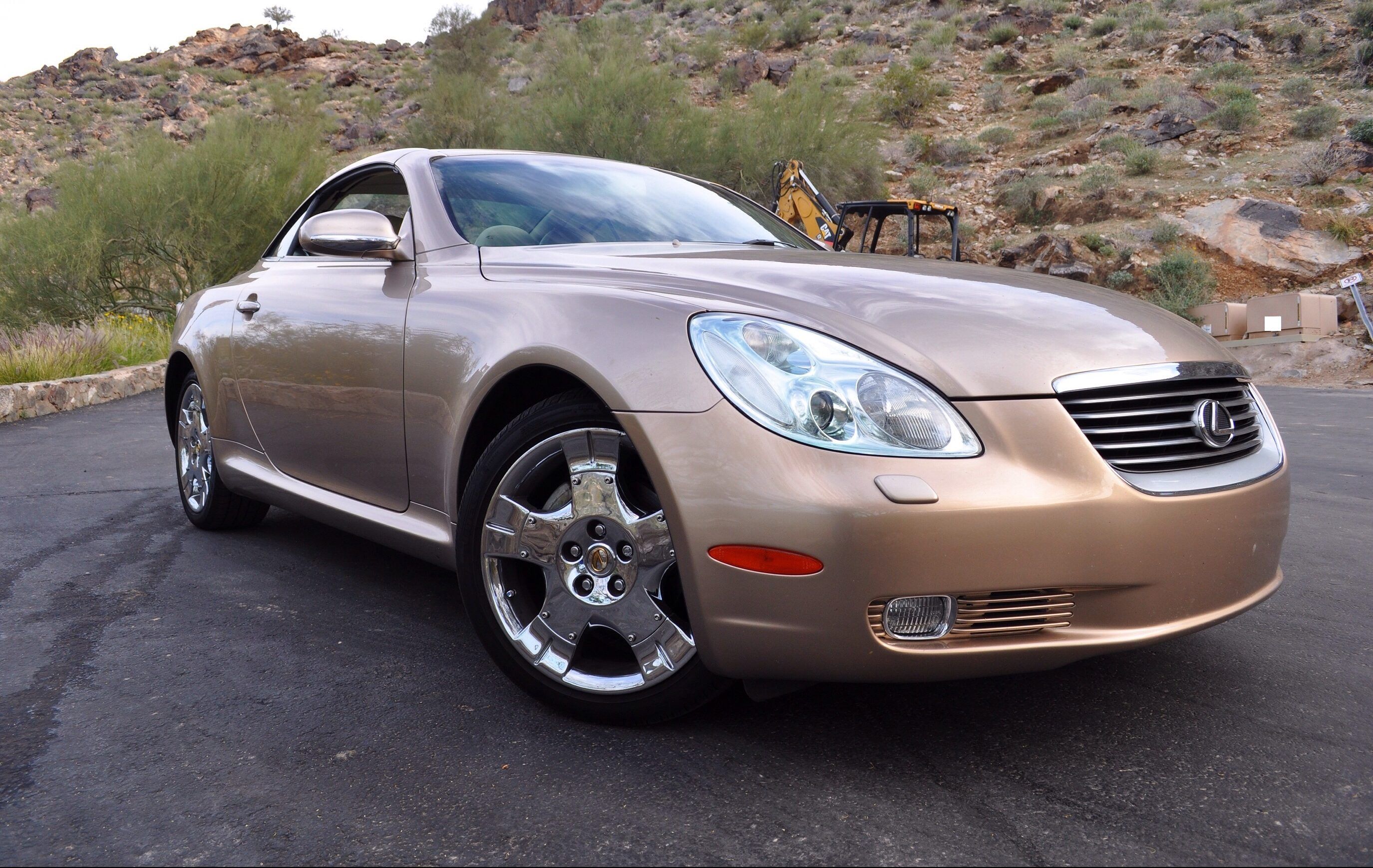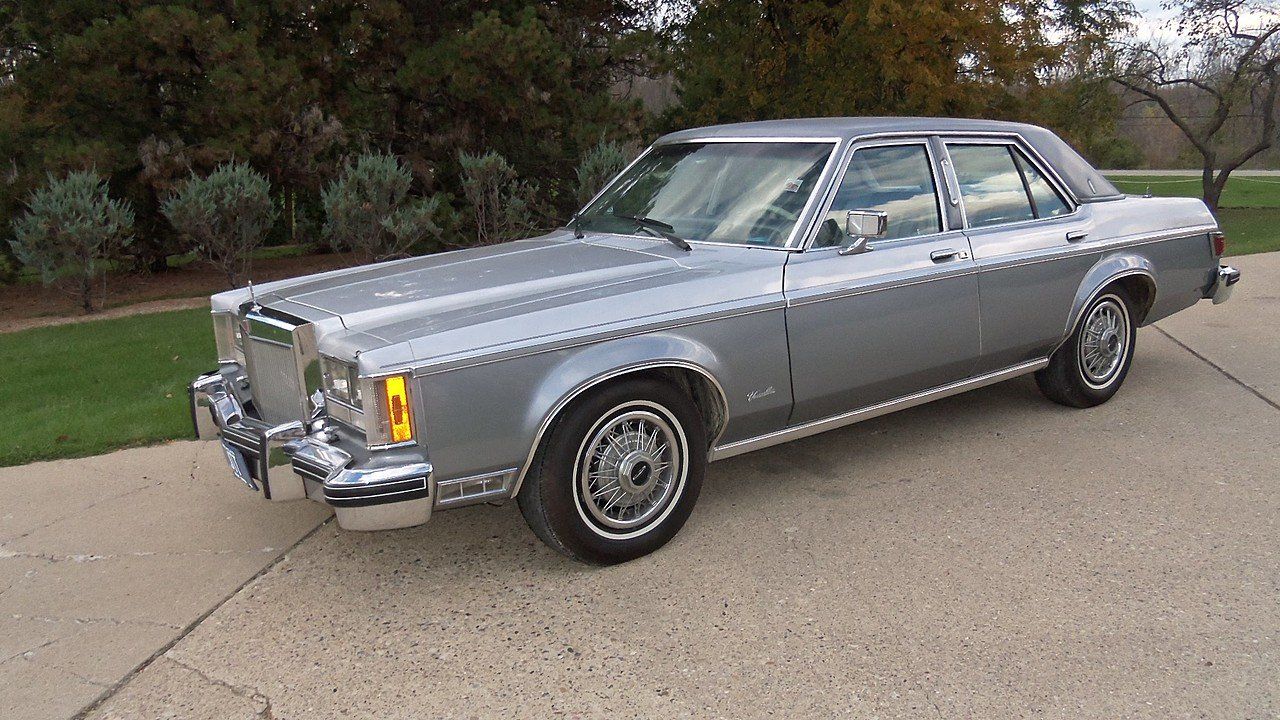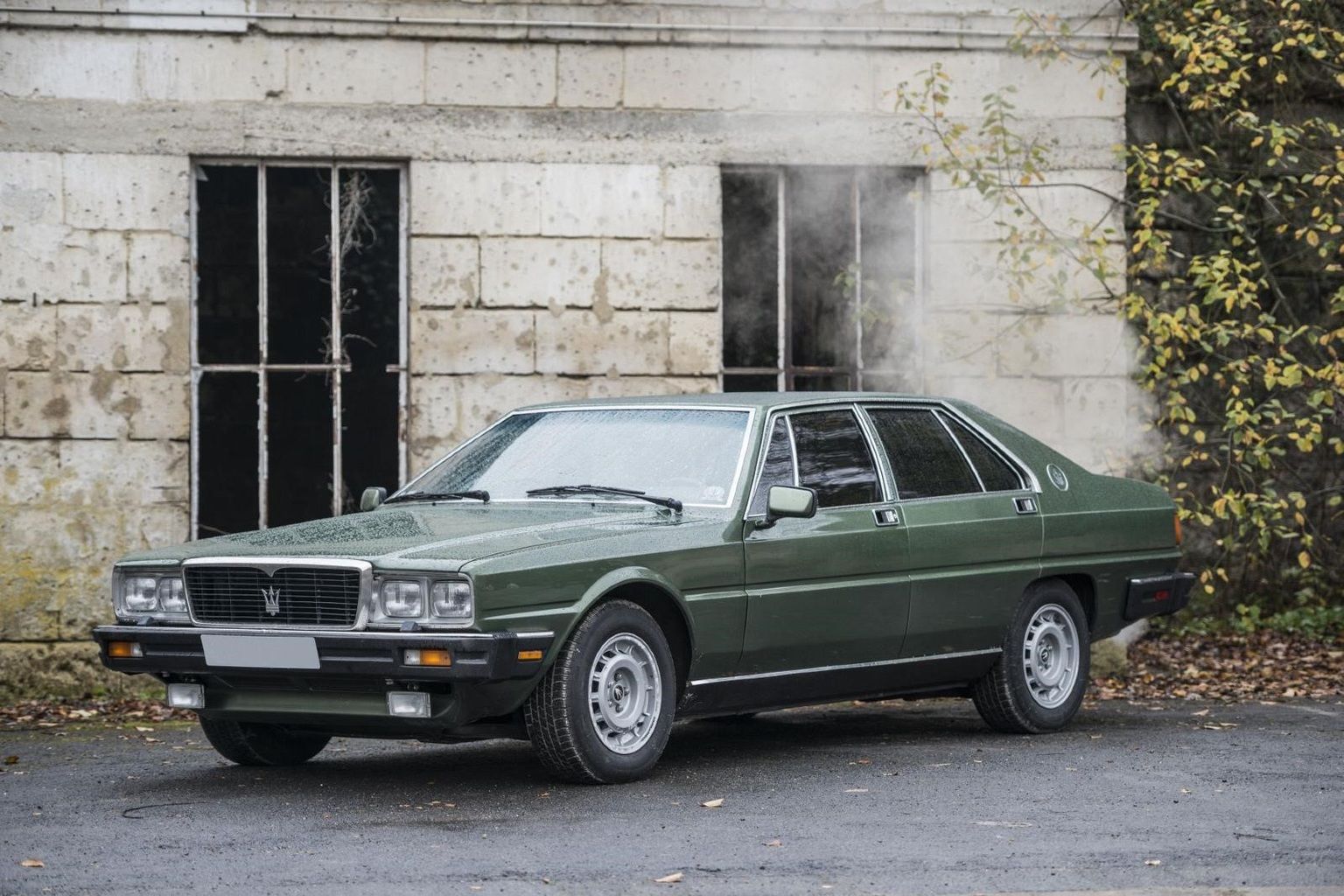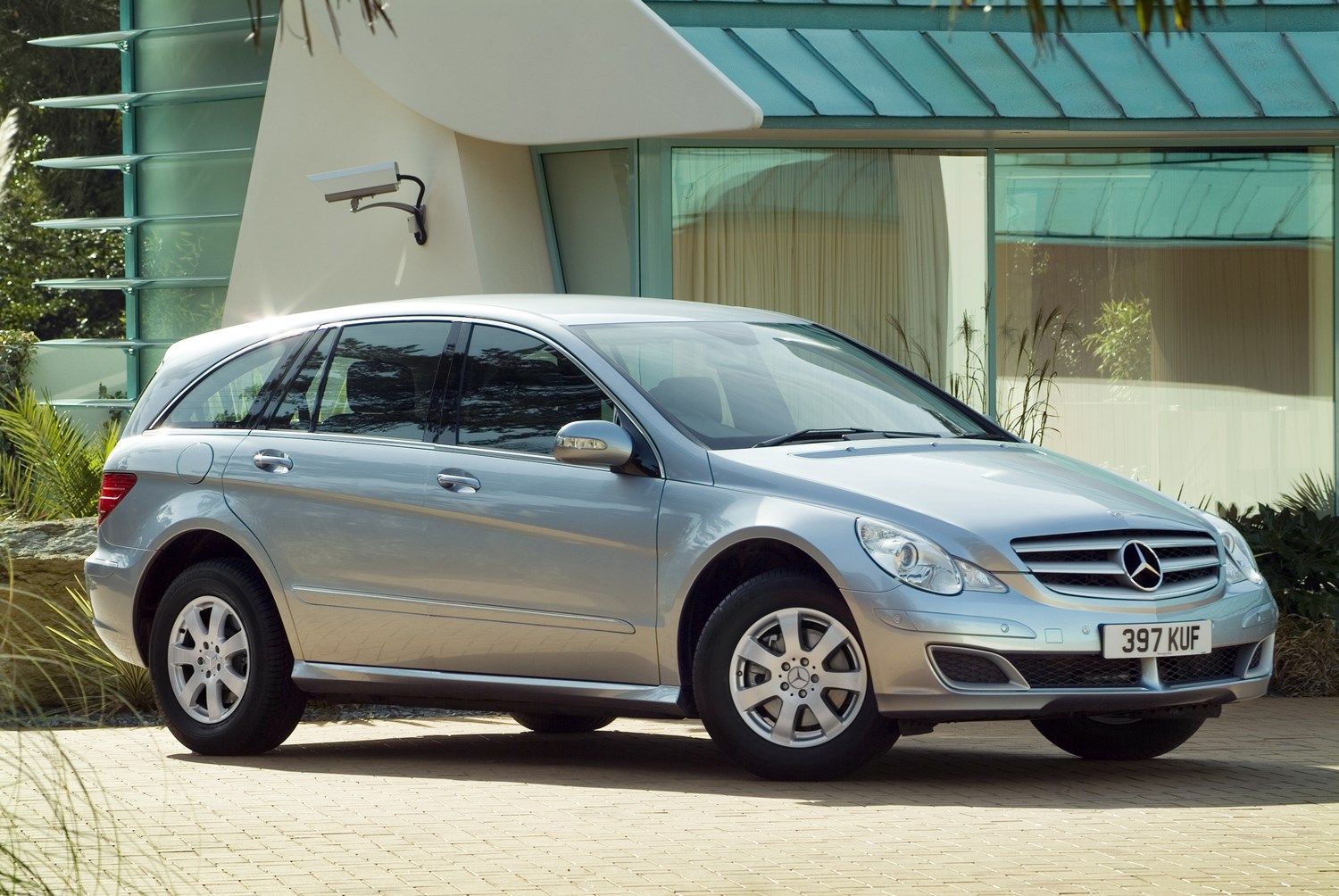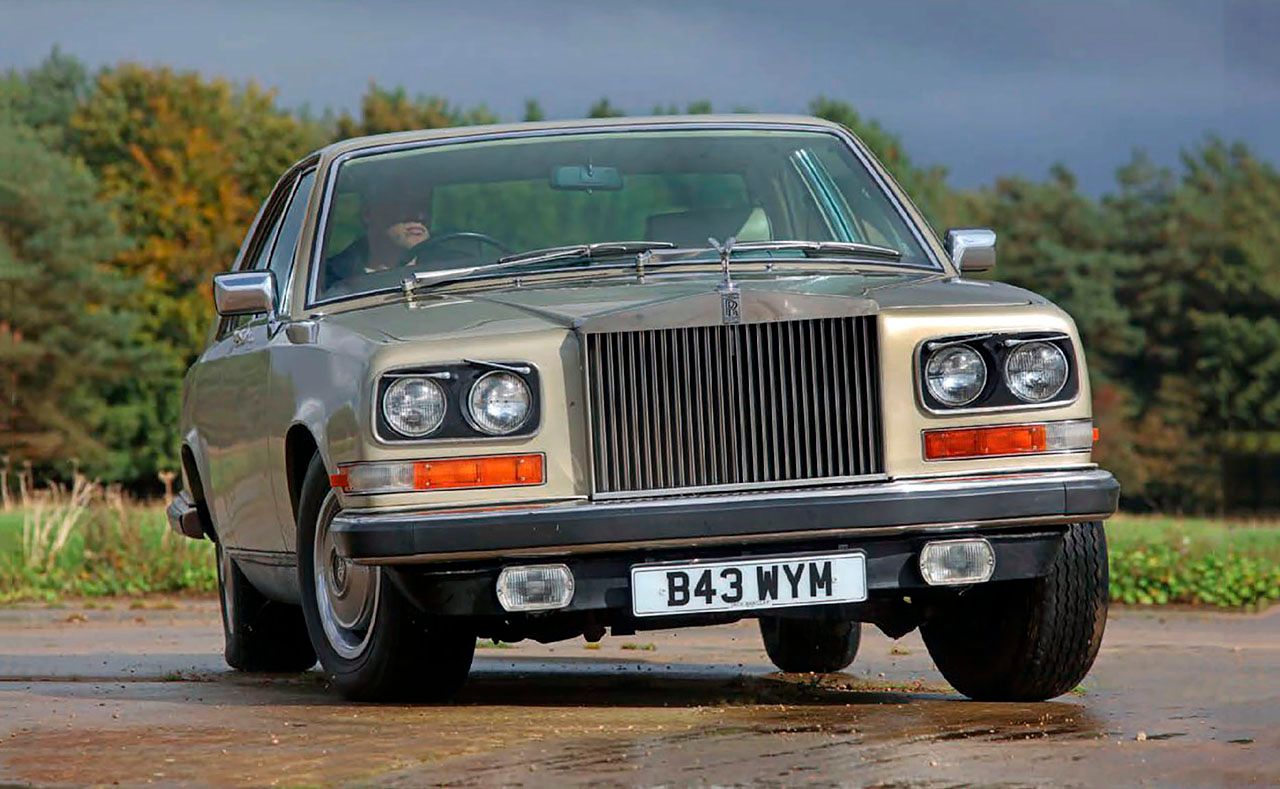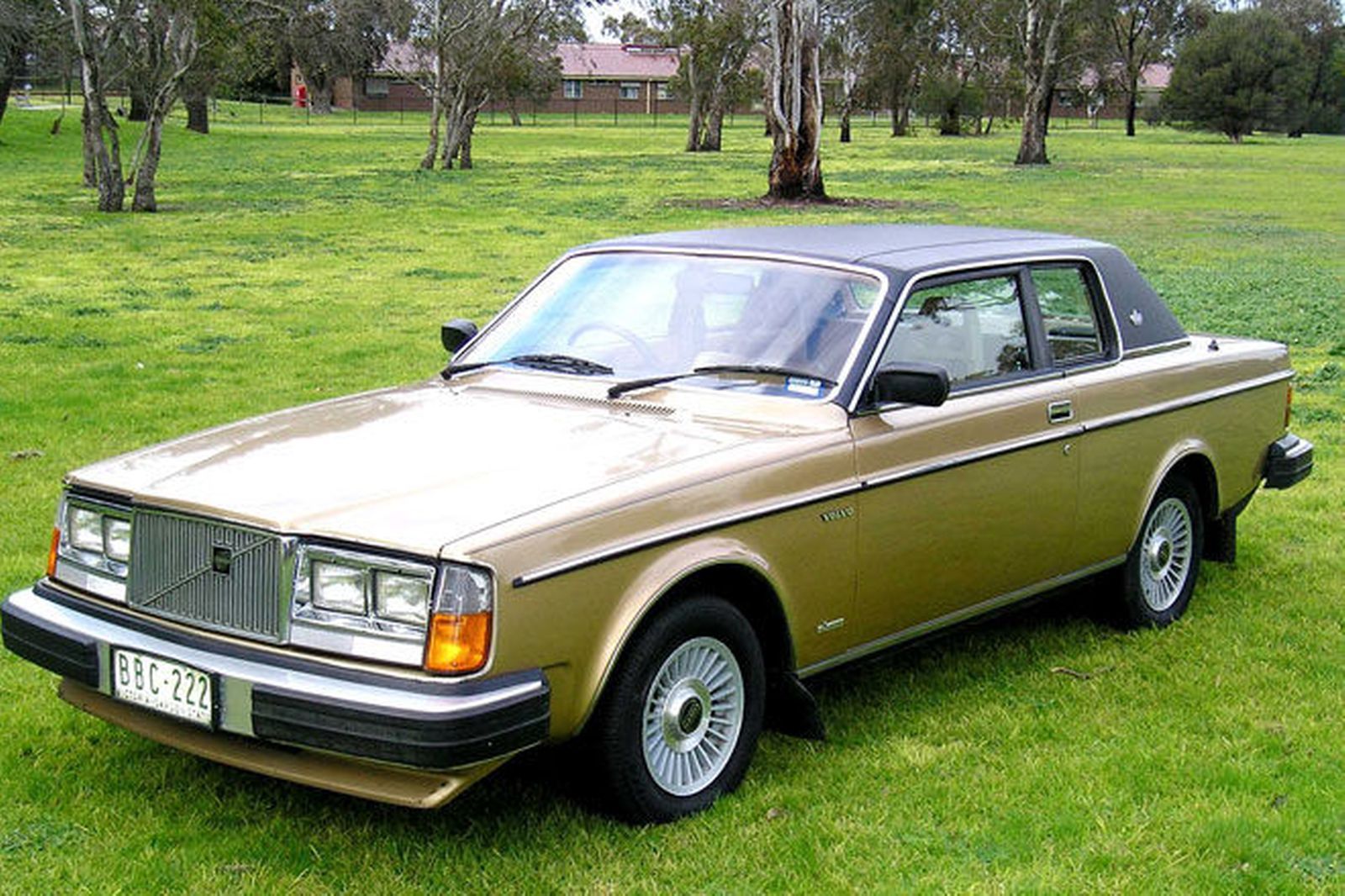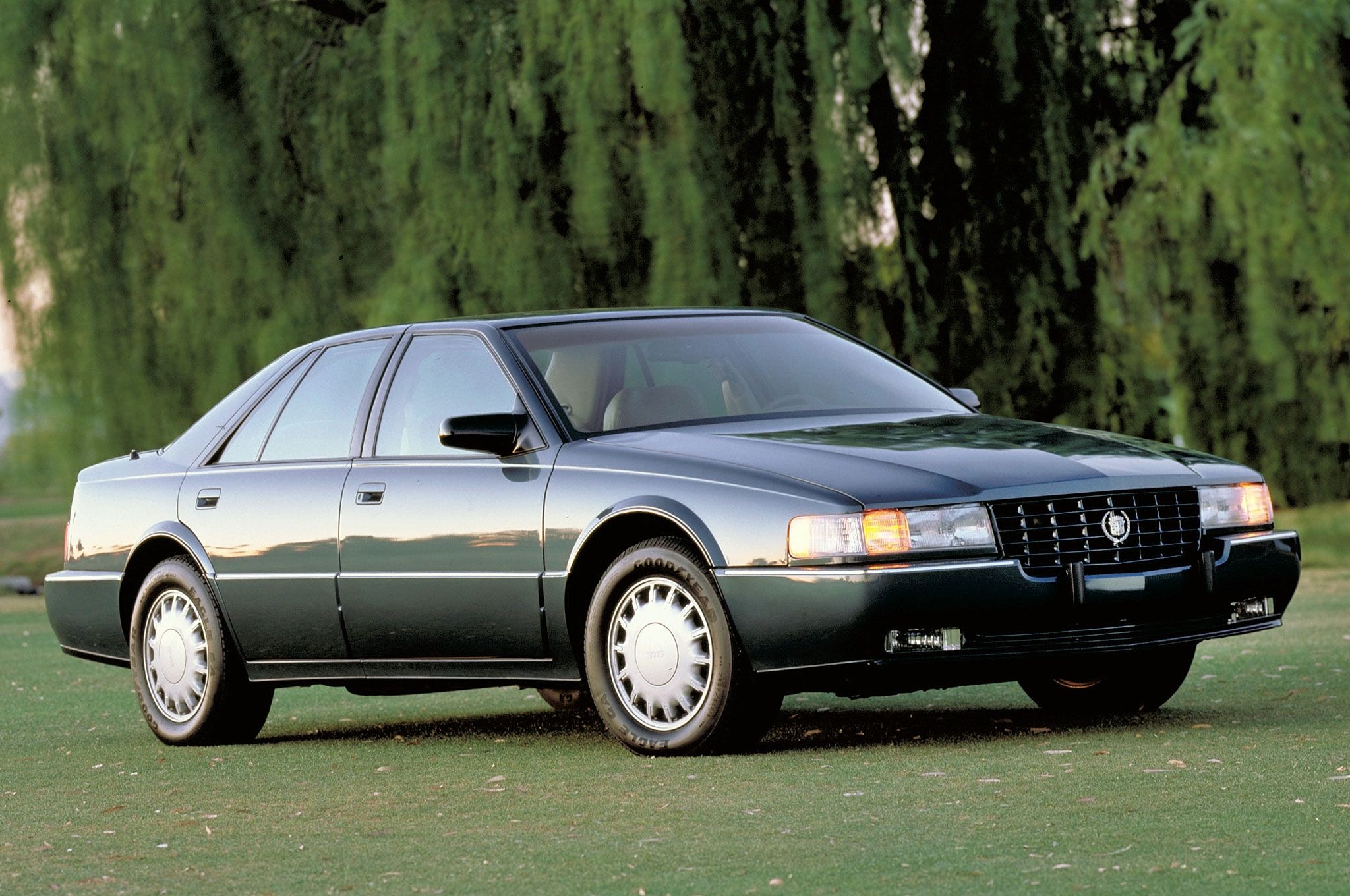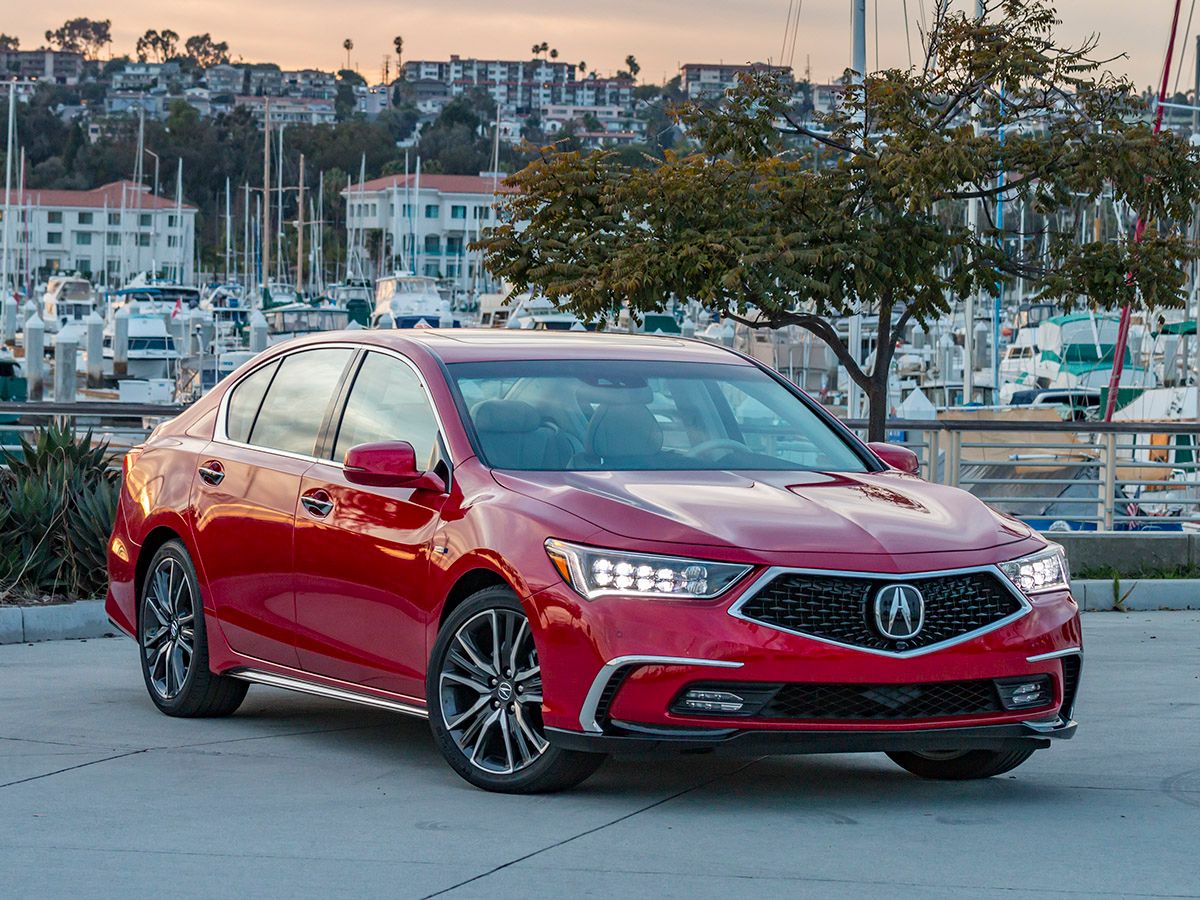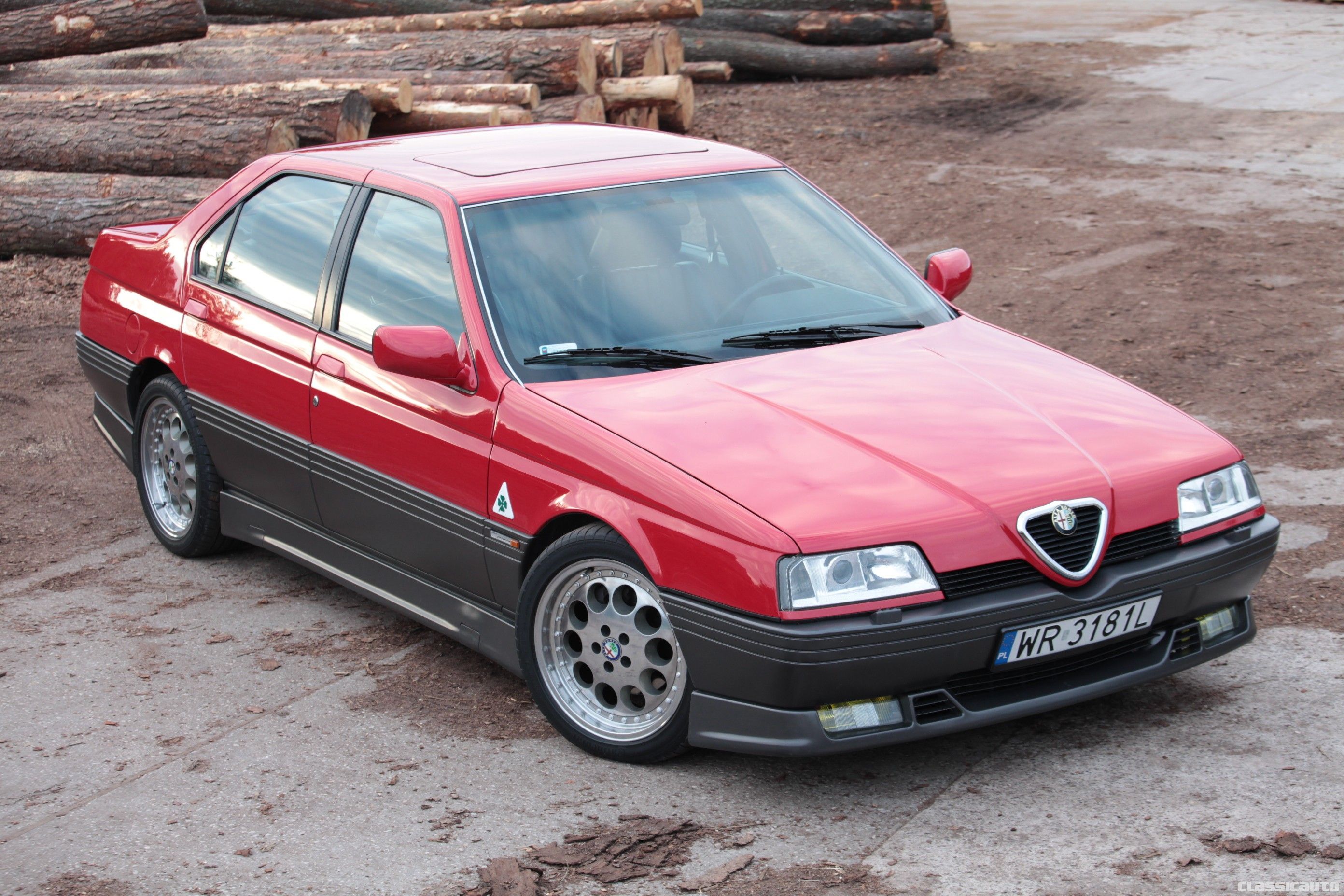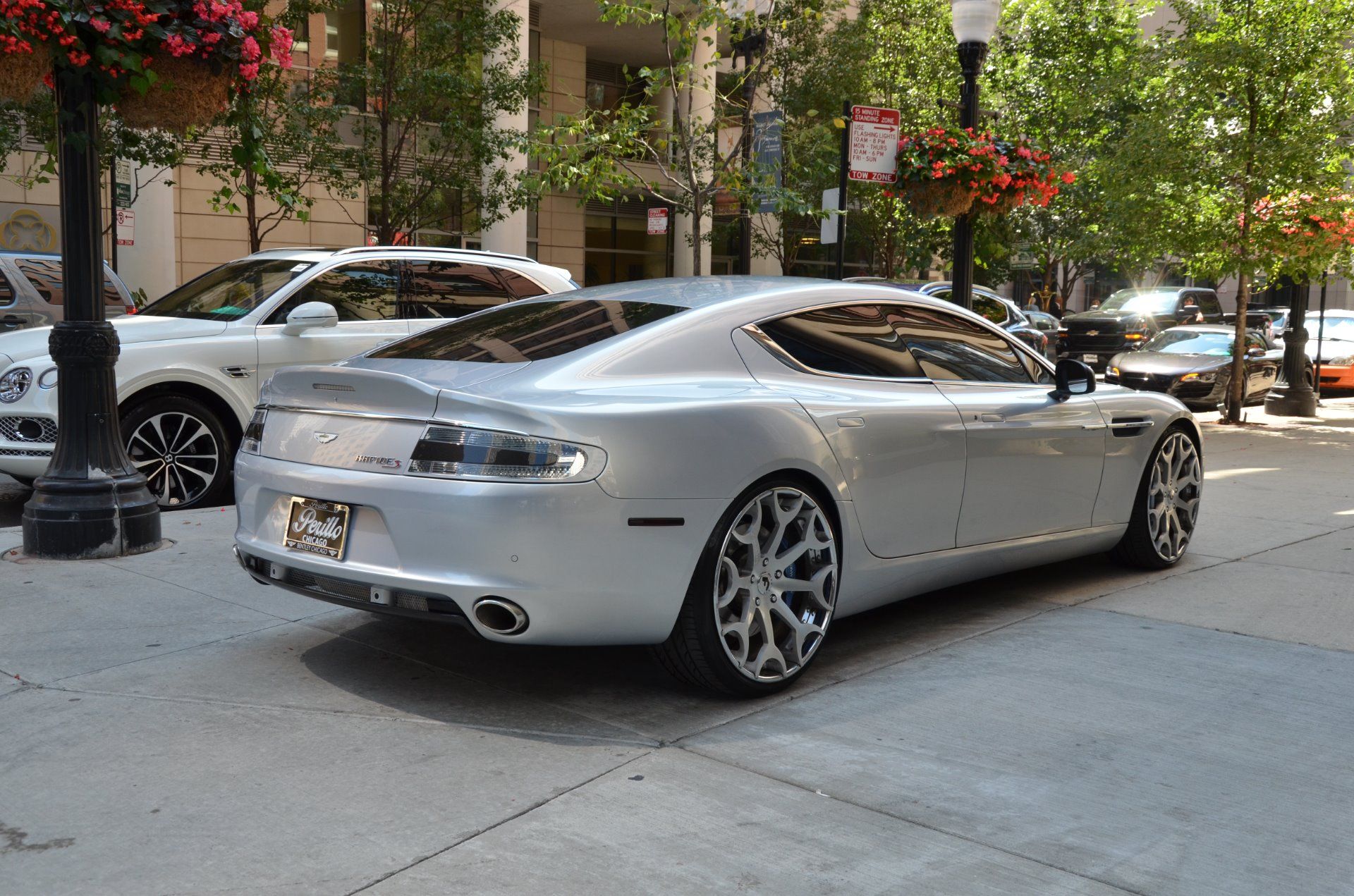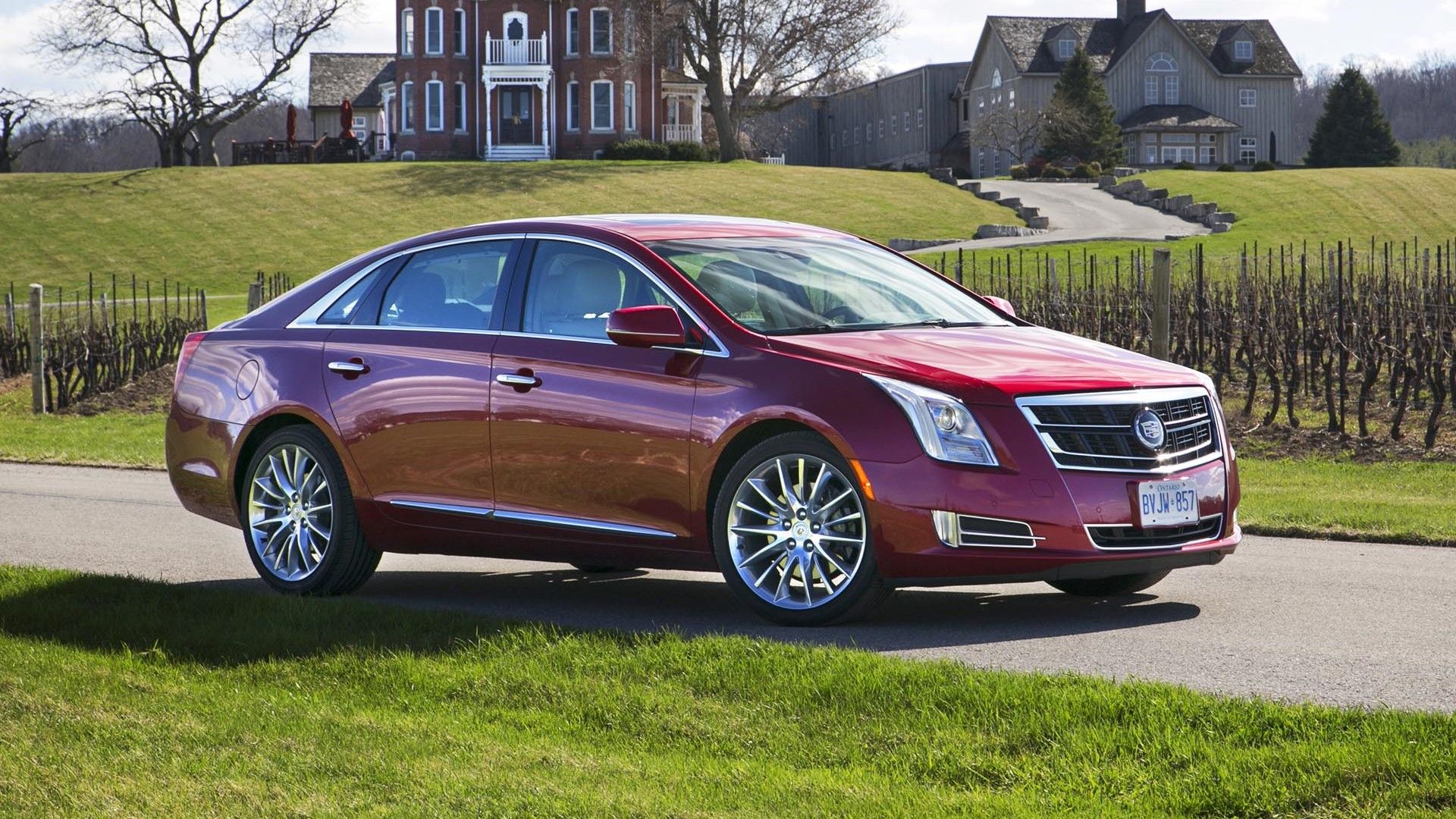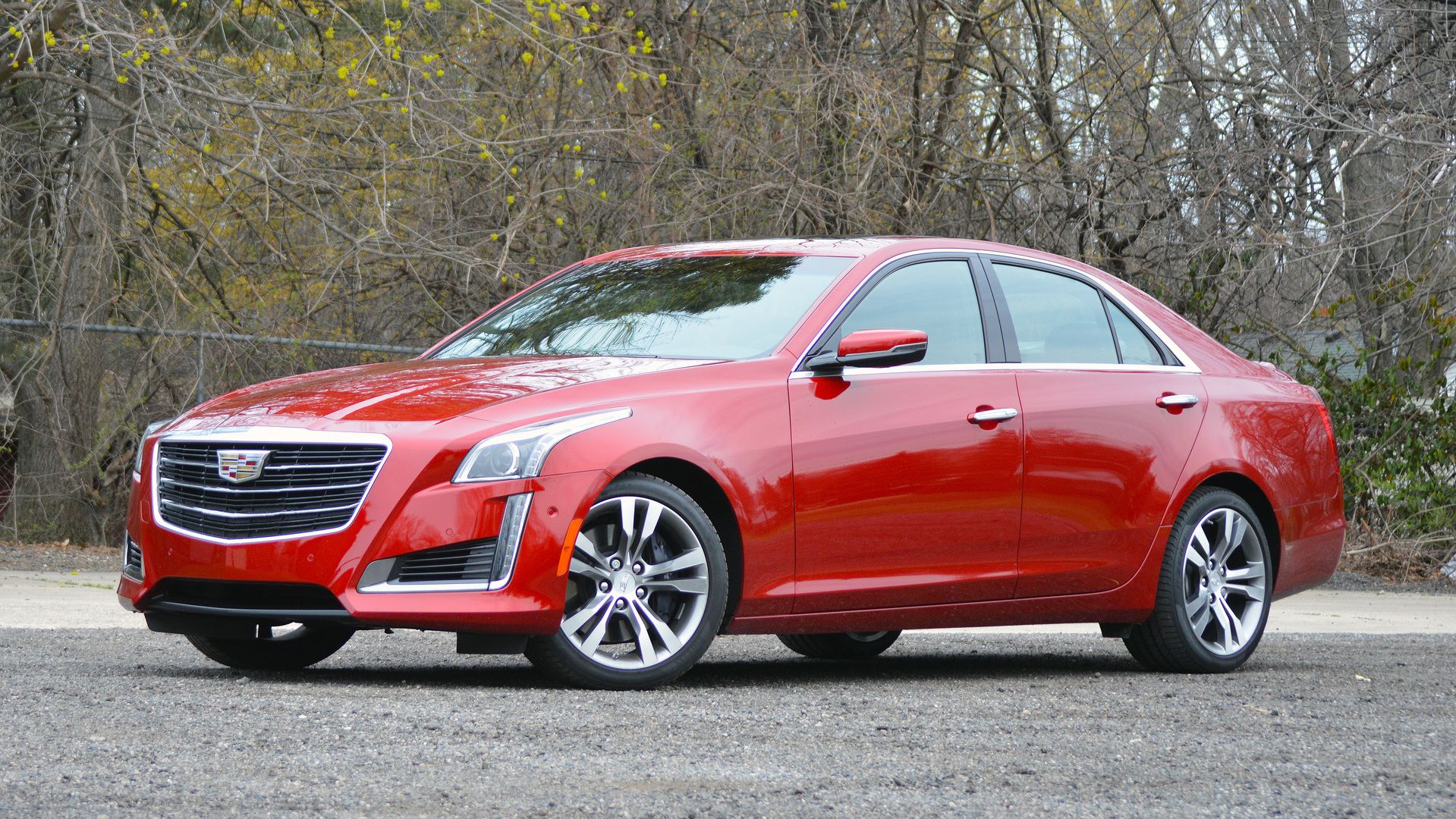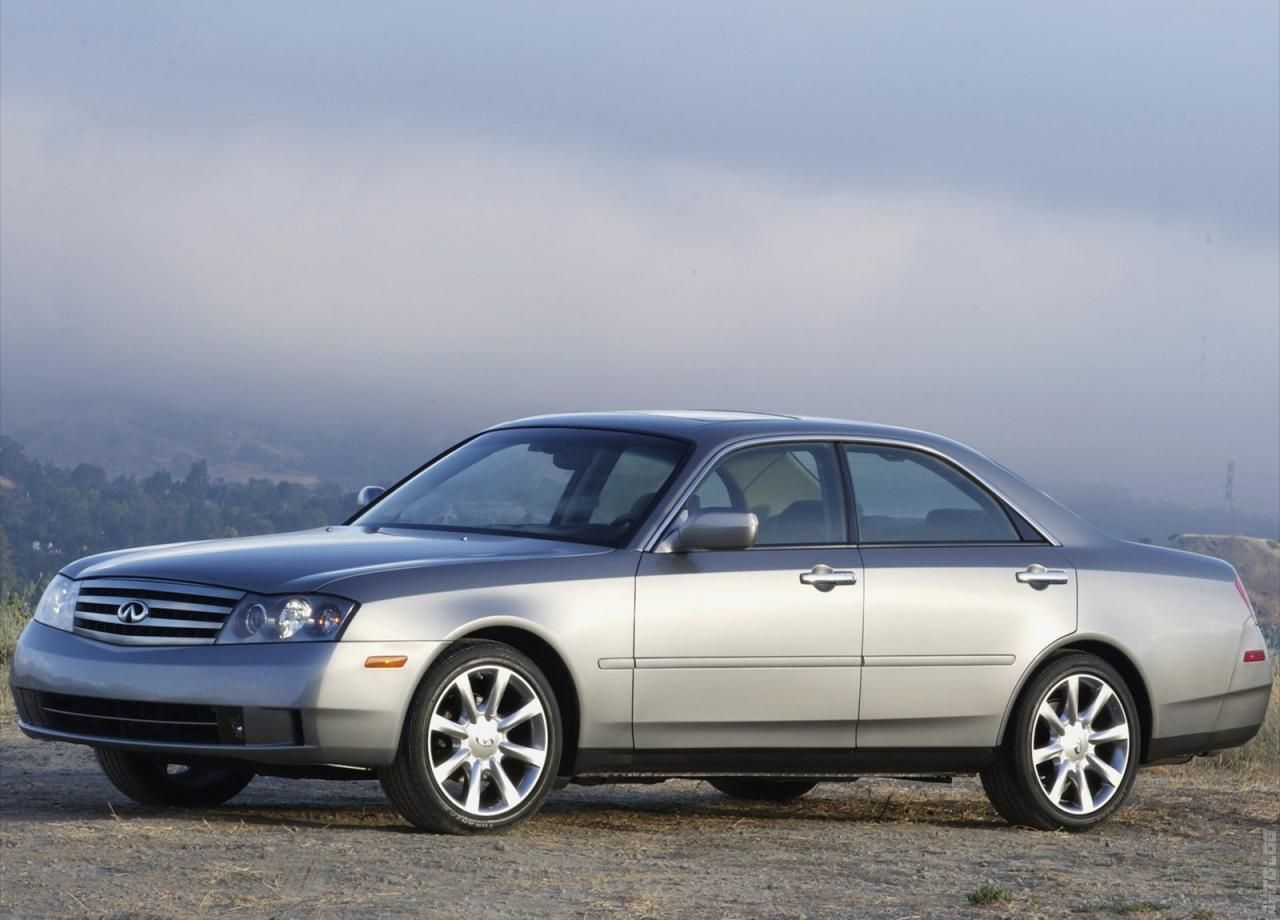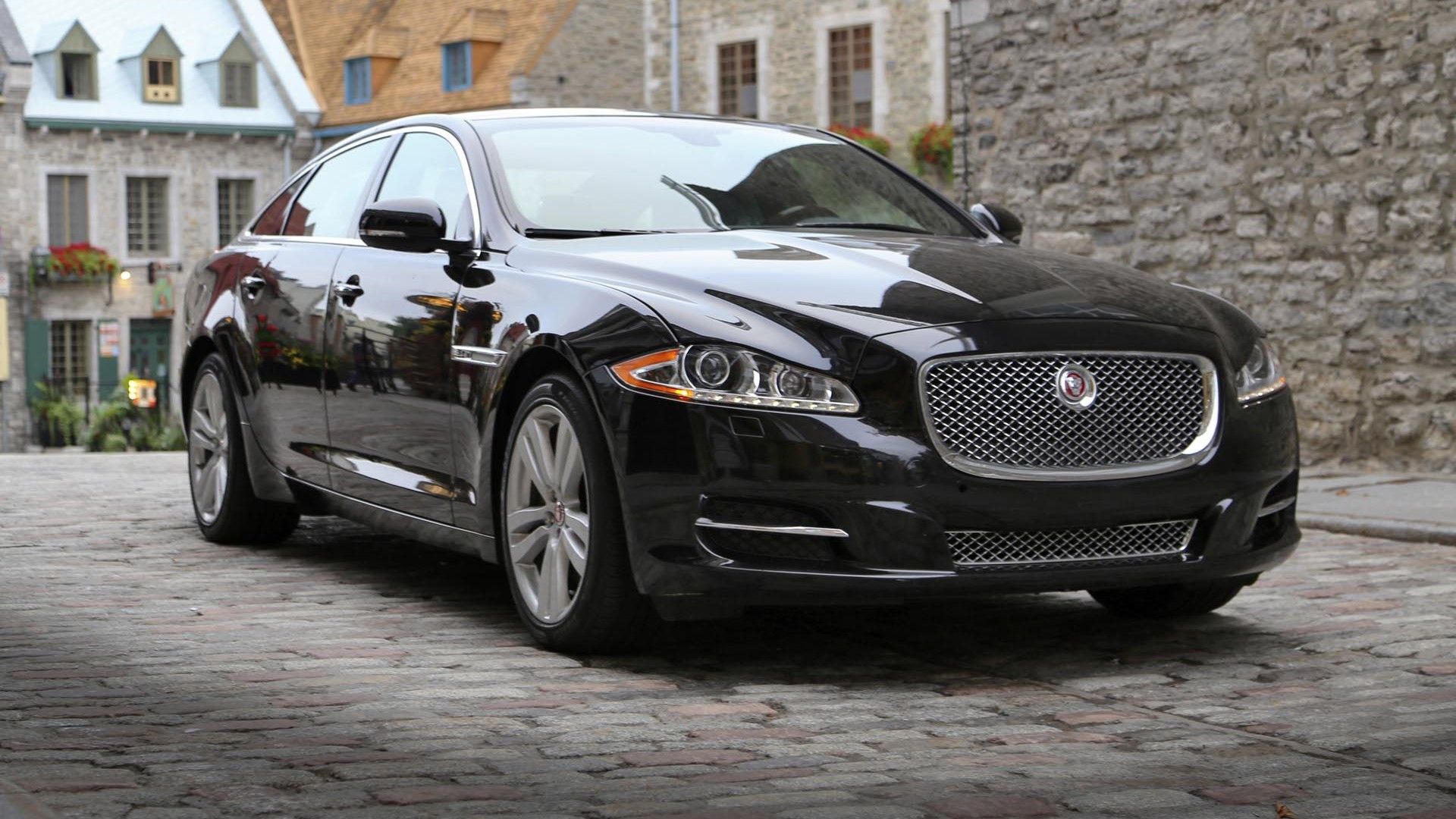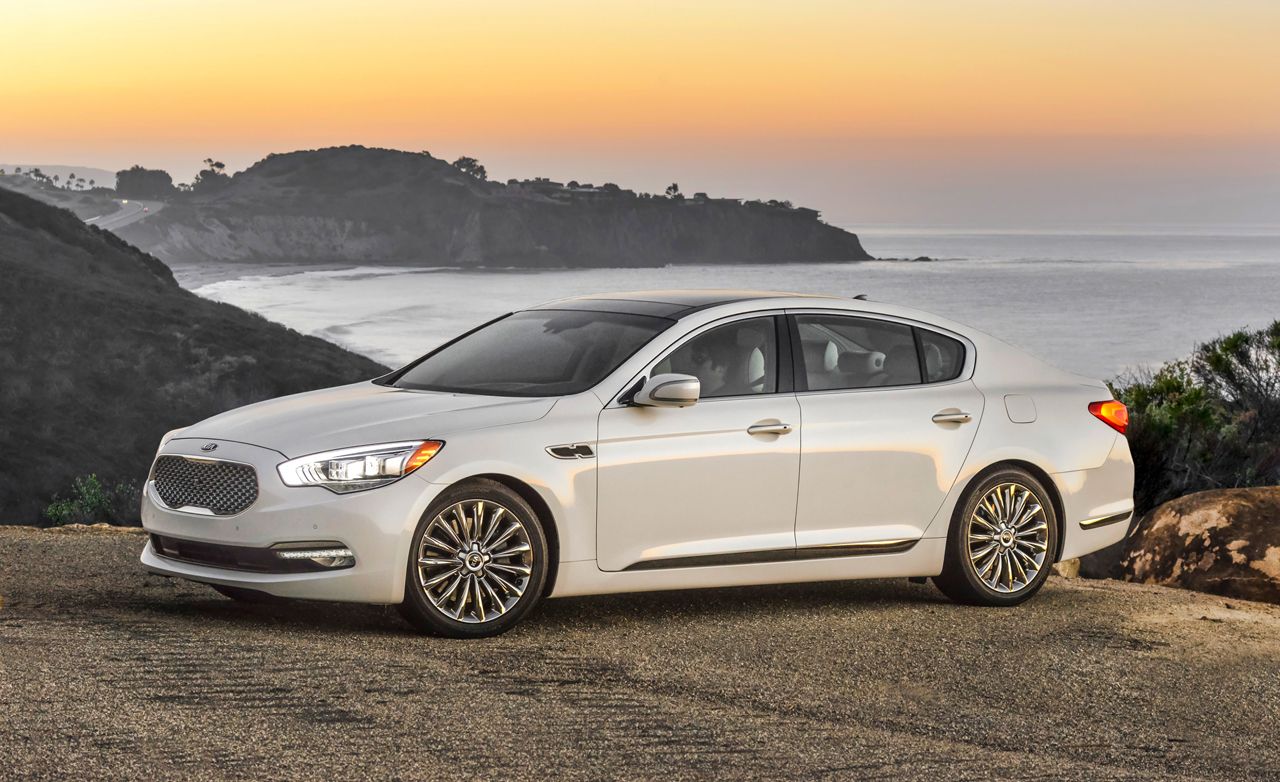The luxury game is a tricky one: consumer tastes can change within a matter of months, driving sales of one subset of the category into the ground while dragging another into the limelight. Look, for instance, at the current craze surrounding luxury crossovers, which have essentially replaced the sedan as the de facto form factor for premium automobiles: according to car-shopping website Edmunds, CUVs and SUVs account for 56 percent of the luxury market in 2017, a 14 percent increase in overall market share compared to 2014. For an industry as inflexible as the auto business, reacting to those pivots is incredibly difficult. Manufacturers sometimes have to resort to gambling on what the next big thing will be in order to gain an edge over rivals. Sometimes, those bets pay off, and in spectacular fashion: Mercedes-Benz, with the first-generation CLS, basically kick started the four-door coupe trend and inspired legions of imitators. Of course, for every success story, there’s a miserable failure. Anyone remember the Lincoln Blackwood, Ford’s much-maligned attempt to turn a pickup truck into a bona-fide luxury vehicle?
The moral the story is that a company, even ones as well-funded as internationally-recognized automakers, can provide a completely accurate assessment of what a highly malleable market will look like in five years. Heck, even tastemakers that influence buyer trends instead of being influenced by them get it wrong sometimes, as the following list attests. Of course, as the following list attests, there’s a difference between a company cranking out a car that’s flat-out bad versus building something good that simply didn’t resonate with consumers.
25 They Want Forgotten: Aston Martin Lagonda
The Lagonda was a car far ahead of its time. Maybe too far ahead. Under the angular bodywork (itself a radical departure from Aston’s other contemporary offerings) is a cockpit playing host to a variety of bleeding-edge amenities.
Released in 1976, it was the first car to feature a completely digital instrument panel, initially lit by LEDs but replaced with cathode ray tubes in later iterations.
Not only that, it also featured touch-sensitive buttons for the lights, power locks, air conditioning, and seat controls. I know what you’re thinking: complicated electronic systems in a British car from the 1970s? Well rest assured, reader; it went exactly as you’d expect. Only 645 were originally built, priced at the loft inflation-adjusted sum of $460,000. Most estimates place the total number of roadworthy examples as being much, much lower.
24 They Want Forgotten: Chrysler New Yorker
The New Yorker moniker is Chrysler’s proverbial crown jewel, harkening back to the days when the automaker was at the cutting edge of automotive luxury. Pick any one of the car’s iterations built prior to the introduction of the eighth-generation model, and bask in the magnificence of their chrome-lined magnificence. Of course, the financial collapse at the start of the eighties meant that stuff like “chrome-lined magnificence” wasn’t going to play well with cash-strapped consumers. In a bid to cut down on costs, Chrysler built the new-for-1982 New Yorker on the K-car platform. The FWD, transverse-engined K-car is often credited for saving Chrysler’s bacon, thanks to its cheap-to-manufacture design and sheer adaptability. It was not, however, especially well known for its sophistication. Put simply, it wasn’t a good fit for a vehicle meant to serve as a standard-bearer for domestic luxury.
23 They Want Forgotten: Chrysler TC by Maserati
The clumsily-named TC by Maserati was Chrysler’s attempt at prettying up their K-car-based Le Baron convertible with a bit of Italian flair, courtesy of a turbocharged inline-four built by Maserati and a body styled by the maestros at Pininfarina.
On paper, those are the makings of a pretty tasty recipe.
At the time however, Maserati was going through something of a crisis, and build quality suffered terribly: the high-output 2.2-liter engine was especially error-prone. Even worse, the TC (I refuse to call it by its full name) was far more expensive than the closely-related, almost identically-equipped Le Baron GTC.
22 They Want Forgotten: Jaguar S-Type
The S-Type was Jaguar’s first foray into the hotly contested mid-sized executive sedan segment, meant to do battle against segment veterans, including the venerable E39-chassis BMW 5-Series.
If I’m being kind, the S-Type didn’t exactly make a great first impression, with blobby styling that looked more like a parody of classic British cars than an actual homage.
That only got worse as you peeled back the retro-pastiche skin, as its mechanical undergarments were developed during Ford’s tenure over Jaguar. It’s so-called DEW platform also underpinned the less-than-fondly-remembered Ford Thunderbird revival and the Lincoln LS luxury sedan (which at least had clean, conservative styling on its side).
21 They Want Forgotten: Lexus SC430
Deemed the “worst car in the history of the world” by former Top Gear hosts James May and Jeremy Clarkson, Lexus’ stab at the premium two-door market could best be described as a failure. Features like a nifty folding aluminum roof, an unctuously smooth 4.3 3UZ-FE V8 engine, and the automaker’s typically stellar build quality simply couldn’t outweigh the car’s list of negative traits, among them being the blobby, bizarre styling, stodgy handling, and crashy ride quality. Bestowed with the rare honor of being one of the last production cars to be fitted with a cassette tape deck, Lexus made it clear that their target audience was automotive-disinclined, Florida-bound octogenarians, more concerned with no-fuss reliability than gee-whiz gizmos.
20 They Want Forgotten: Lincoln Versailles
Much like the eighth-generation Chrysler New Yorker, the Lincoln Versailles represented the failure of a storied brand to properly adapt to rapidly changing times. Clumsy styling that tried to harken back to the glory days of the brand? Check (there was even a Continental-aping spare-tire hump embossed in the trunk). Underpinnings shared with much cheaper offerings? Check, as the Versailles was basically a Ford Granada in evening wear. Tacky leather-n-velour interior? Check, but won’t hold that against it, because almost every other domestic offering was equally terrible in that regard. Buyers were unconvinced: over a four-year production run, "only" 50,000 units were sold. In comparison, the Versaille’s closest rival, the Cadillac Seville, sold almost as many units in 1979 alone.
19 They Want Forgotten: Maserati Quattroporte 3
For many car enthusiasts, Maserati has an almost unassailable reputation, seemingly untainted by scandals surrounding shoddy build quality and questionable design choices. That said, even the most devoted of Maserati devotees will concede that the third-generation Quattroporte is a black mark in the company’s history.
Meant to spearhead the automaker’s foray into the North American market, designer Giorgetto Giugiaro (who really should have known better) sketched out a boxy profile that was more in line with Chevy’s offerings of the time than anything in Maserati’s lineup.
Mind you, the Quattroporte 3 does have some inherent value as a collector’s item, thanks to its status as the last hand-built Italian production car. Whether or not you trust the integrity of a hand-built quasi-exotic is up to you, however.
18 They Want Forgotten: Mercedes-Benz R-Class
No one was quite sure what to think when Mercedes-Benz pulled the wraps off of the R-Class at the 2005 New York International Auto Show. Clearly, the three-pointed star didn’t know what it was for either, and created a whole new niche for it to reside: the so-called "Sports Cruiser" segment, which peaked with a population of one and is currently uninhabited.
Buyers weren’t impressed: R-Class sales were at their highest in 2007, with a mere 13,031 cars having left dealer lots. In 2012, its final year of production, just under 3,900 units were sold. It taught Mercedes a lesson that seems evident: ugly won’t sell, regardless of build quality.
17 They Want Forgotten: Rolls Royce Camargue
Most think the two-door Wraith and open-top Dawn to be Rolls-Royce’s first attempts at appealing to a more youthful subset of the 0.01 percent. However, this was not the case. Introduced in 1975, the Camargue proved to be far less successful in that mission than the aforementioned two-doors.
At the time of its release, it was the most expensive car money could buy, and those who could pony up the necessary scratch found the modern, angular bodywork (styled by Pininfarina no less) to be way too brash.
Build quality also lagged some way behind other Rolls of the period, in spite of its mechanical underpinnings being shared with the rest of the company’s lineup, including the 6.75 liter V8.
16 They Want Forgotten: Volvo 262C
Italian coachbuilder Bertone forged its reputation with a long line of audacious, avant-garde designs. Suffice to say, the 262C wasn’t among them. The story starts in the mid-seventies: Volvo, seeking to elbow their way into the premium two-door segment, hired the firm to turn their bland, boxy 264 sedan into a sleek grand-tourer.
Rather than do a clean sheet redesign, Bertone opted to keep most of the front and rear ends of the regular 264 unchanged, focusing their attention on the space between the axles. The result was a poorly-proportioned mess, with high sills, enormous doors, and a bunker-low roof (apparently, the vinyl top was there to disguise the weld marks on the A and C pillars). Even worse, because the 262C was finished at Bertone’s factory rather than Volvo’s, rustproofing was basically nonexistent.
15 They Want Forgotten: Buick Lucerne
GM’s Northstar V8 is one of the most controversial engines in the corporation’s history. Featuring an all-aluminum construction, dual overhead cams, and four valves per cylinder, it represented a radical departure from the relative simplicity that defines the automaker’s pushrod LS-series motors.
Like all new technologies, it had a fair share of teething issues, with sky-high oil consumption, frequent carbon buildup, fragile head gaskets, and high maintenance costs being cited as the most common.
So, if the idea of a FWD barge with retirement-home styling and a plastic-fantastic interior (Car and Driver’s Patrick Bedard defined the Lucerne’s cockpit as “[…] a first-rate simulation of quality materials”) appeals to you, do yourself a favor and go for an example powered by Buick’s far more dependable 3800-series V6.
14 They Want Forgotten: Cadillac Seville (4th Generation)
Before I go any further, I should mention that Cadillac Seville ownership is not entirely without upsides: sharp, edgy styling that still manages to look relatively fresh today, cloud-like ride quality, and a cavernous interior. Mind you, some might object to the quality of said interior, which was covered from tip to toe in brittle plastic and sweaty leather. The kicker was the top-range Seville’s $47,495 asking price (adjusted for inflation, that works out to just over $76,000), which made it the most expensive, yet smallest, car in Cadillac’s lineup. Against contemporaries like the Lexus LS400 and BMW 540i, it never stood a chance.
13 It Deserved Better: Acura RLX
The RLX is Acura’s slowest selling model, with just 13,000 units having been sold since its introduction in 2013. However, sales figures don’t paint the full picture, as Acura’s range-topping sedan is a lot of car for the money, even at an MSRP of just over $60,000. Packing enough technological heat to turn asphalt into powder, the top-range RLX Sport Hybrid teams a 377 hp gas-electric powertrain to Acura’s proprietary torque-vectoring SH-AWD system, capable of shunting this leather-lined beast to 60 MPH in just 4.9 seconds. So if you like the idea of outrunning WRXs and GTIs in what looks like a fancy Honda Accord, step right this way.
12 It Deserved Better: Alfa Romeo 164 Q4
Serving as a replacement for the beautiful, temperamental Milano, the mid-sized 164 was also a goodbye of sorts, not only the last Alfa Romeo to sold on our shores (until the limited production 8C sports car), but also the last Alfa Romeo to be developed prior to their acquisition by FIAT.
It follows then that the top-range Q4 trim would be the ultimate expression of Alfa-ness.
Featuring an AWD system designed in part with Austrian engineering firm Steyr-Puch and the firm’s legendary Busso V6, seen here in 3.0 liter, 24-valve flavor, this 230 hp sports sedan was sold here in excruciatingly low numbers, with most estimates hovering around a mere 50 cars or so.
11 It Deserved Better: Aston Martin Rapide
Even in the context of Aston Matin’s niche market, the Rapide isn’t exactly a great seller. According to company representatives, their sales record in 2017 of more than 5,000 cars was primarily driven by the DB11 grand-tourer and a variety of high-revenue special-order vehicles, like the Vantage GT8 and Vanquish Zagato. That doesn’t leave much room for the sleek four-door, whose production numbers hover somewhere between 1,000 and 1,250 units per year. Compared to its metaphorical ancestor, the quirky, complex Lagonda, the Rapide is an altogether more conventional affair, with DB9-esque styling and Aston’s trusty 5.9 liter naturally-aspirated V8 up front, capable of delivering 552 hp and 469 lb ft of torque to the rear axle.
10 It Deserved Better: Cadillac XTS V-Sport
The XTS, with its enormous interior and FWD-based architecture, is a throwback to Cadillac’s past as the world’s premier purveyor of super-comfy land yachts, mostly devoid of any Nürburgring-crushing pretensions.
However, if you’re looking for just a hint of that Germanic spice, tick the V-Sport option box.
Aside from a slight stiffening of the suspension and acres of black leather, this option package adds a 3.6 liter twin-turbocharged V6 to the mix. This bi-turbo powerplant is good for 410 hp and 369 lb-ft of torque, deployed to all four wheels through a six-speed slushbox, and is capable of flinging this two-ton land yacht to 60 MPH in just 5.2 seconds.
9 It Deserved Better: Cadillac CTS
Cadillac’s product lineup is the strongest its been in decades, with a lineup of sharp-handling, sharply-styled offerings that are every inch the dynamic equivalent of Germany’s best. There just one tiny problem: their cars aren’t selling. Overall sales in 2017 crested just over 156,000 units, just over half of what BMW moved over the same span of time. The bulk of that number can be credited to crossovers like the newly-introduced XT5, of which almost 70,000 were sold last year. The CTS, meanwhile, sold about one-seventh of that amount. So, if you’re the type of person who prioritizes driving enjoyment over out and out plushness in a luxury sedan, I'm sure that the local Caddy dealership will be very happy to have your business.
8 It Deserved Better: Infiniti M45
Positioned just under the Q45, Infiniti’s flagship sedan, the M45 was based on the Japanese market Nissan Gloria, a full-size family sedan.
In order to boost curb appeal, the automaker gave the car a subtle nose job, re-trimmed the interior, and redesigned the rear suspension (making it very similar to that of the 350Z sports car), and dropped their VK45DE V8 into the engine bay.
This brawny 4.5 liter unit delivered a stout 340 hp and 333 lb ft of torque to the rear wheels through a five-speed automatic transmission. Today, this slab-sided Japanese cruiser is being touted as a potential collector’s item, thanks to its relative rarity.
7 It Deserved Better: Jaguar XJ
On paper, Jaguar’s range-topper is a winner: sleek, sinister styling, an aluminum-intensive structure, a gorgeously ornate interior with buckets of legroom, and a solid range of engines. Thankfully, by most accounts, those ingredients do seem to make a pretty tasty dish, with Car and Driver’s Mike Duff claiming that it “feels like a big car due to the simple fact that it is, but it also feels lighter and more responsive than all of its obvious rivals.” Unfortunately, those rivals outsell the big Jag by a considerable margin, with its most prominent competitor, the Mercedes-Benz S-Class, outselling it by almost six to one in 2016.
6 It Deserved Better: Kia K900
According to carsalesbase.com, Kia sold less than 5,000 first-generation K900s on our side of the Pacific. Despite those abysmal figures, the Korean automaker decided to try their luck again.
Riding on a wider, longer platform (shared with the more widely known Genesis G90 and G80), the new car cuts an altogether more distinguished, distinctive profile than its Mercedes-aping predecessor.
The interior, meanwhile gets a bit of brand name appeal in the form of a Maurice Lacroix dashboard clock and a 17-speaker Harman/Kardon stereo system, although the overall cockpit design is eerily similar to that of the Mercedes-Benz E-Class. Still, if you’re not too fussed about a smidge of intellectual property theft, it’s hard to argue with the K900’s compelling mix of standard-fit features and $55,000 base price.


